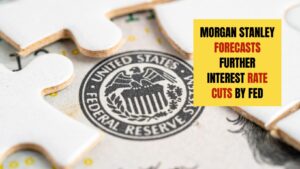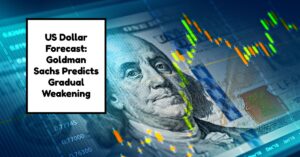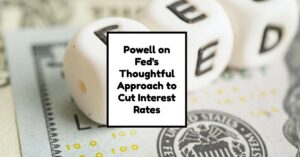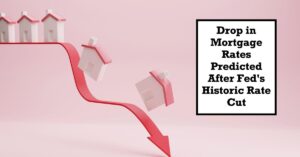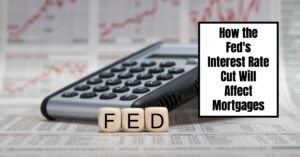The U.S. Federal Reserve (Fed) is indeed set to continue interest rate cuts, which could reshape economic dynamics in the coming months. As highlighted by Morgan Stanley Wealth Management’s chief investment officer, Lisa Shalett, the Fed's approach is now focused on adapting to a labor market that shows mixed signals while moving away from the rigid 2% inflation target.
The Fed is actively responding to the pressures of fluctuating inflation rates amidst potential economic volatility, especially as the nation approaches a crucial presidential election. This strategy will potentially affect borrowing costs, investments, and how consumers manage their finances in the near future.
Morgan Stanley Forecasts Further Interest Rate Cuts by Fed
Key Takeaways
- Continued Rate Cuts: The Fed is expected to lower rates further in November, with a 89% probability of a 25 basis-point cut.
- Labor Market Concerns: Fed policymakers are closely analyzing a mixed labor market which influences their decisions.
- Shifting Inflation Strategies: The Fed has seemingly abandoned its strict 2% inflation target amidst a changing economic landscape.
- Investment Strategies: Experts recommend diversifying into real assets such as gold and commodities to offset potential market volatility.
The Federal Reserve plays a pivotal role in the U.S. economy, primarily through its monetary policy tools. One of the most significant tools in its arsenal is the manipulation of interest rates. By cutting interest rates, the Fed aims to encourage borrowing and spending, which can stimulate economic growth. Recent comments from Lisa Shalett at the Reuters Global Markets Forum have amplified discussions on the Fed’s monetary strategy, highlighting an ongoing commitment to rate cuts amid emerging economic realities.
Current Economic Environment
In examining the current state of the U.S. economy, various factors contribute to the Fed's decision to continue interest rate cuts:
Inflation Rates
Currently, inflation rates are exhibiting behavior that poses challenges for Fed policies. Recent reports indicate that U.S. consumer prices rose slightly more than expected in September, suggesting that inflation is not cooling at the desired pace. This raises questions about the effectiveness of previous rate hikes—years spent attempting to rein in inflation only for the Fed to find itself still grappling with rising prices.
Although it is generally accepted that rising prices impact consumers negatively, moderate inflation can also indicate healthy economic activity. The delicate balance of achieving a stable economic environment mandates that the Fed remain cautious in its approach.
While inflation management remains a top priority, the Fed has seemed to shift towards a more flexible approach, abandoning its strict adherence to the 2% inflation target. The reality that it might not be achievable in the near term suggests that the Fed is willing to recalibrate its focus on broader economic growth and employment stability rather than exclusively targeting inflation.
Employment Dynamics
The labor market, which is typically a strong indicator of economic health, is displaying signs of inconsistency. Some sectors experience fluctuating job growth, while others encounter significant layoffs. Shalett noted during her analysis that the labor market is “mixed in pockets,” indicating that while certain regions thrive, others may face more challenges.
This variability complicates monetary policy, as the Fed must weigh the overall economic health against localized employment issues. Investing in communities and creating job opportunities helps foster consumer confidence, which in turn supports sustainable economic growth.
Market Reactions
Market reactions are integral in understanding how consumers and investors perceive the Fed’s role and decisions. Although equity markets may not have fully grasped the potential implications of further rate cuts, bond markets are adjusting in response to the anticipated shifts. This is particularly notable in the long end of the curve, where higher expectations for inflation begin to reflect in pricing. The bond market serves as a crucial indicator of where investors believe the economy is headed; thus, their actions are vital for those following Fed developments closely.
Political Landscape
The political landscape also plays an essential role in shaping the Fed’s monetary policy strategy. With the U.S. presidential election approaching on November 5, policymakers must adapt to the uncertainties posed by the electoral process.
The closeness of the race, evidenced by recent polls highlighting neck-and-neck competition between Democratic Vice President Kamala Harris and former Republican President Donald Trump, means that economic decisions may be influenced by the need to maintain stability during this volatile period.
The Fed's actions, therefore, will likely be more cautious as it considers potential political outcomes that could impact economic policy and consumer confidence.
Market Predictions and Investment Strategies
Traders are currently leaning heavily towards the likelihood of a rate cut, with an 89% probability pointing to a 25 basis-point reduction during the Fed's policy meeting scheduled for November 6-7. This significant consensus reflects a collective belief in the necessity of such measures to foster economic growth while maintaining stability. The abandonment of the strict 2% inflation target demonstrates a commitment to a flexible monetary policy that responds to broader economic realities.
Given these anticipated changes, investment strategies in this environment are shifting. Shalett emphasizes the importance of diversifying portfolios to include real assets — such as gold, commodities, real estate, and energy infrastructure assets — that can offer resilience against market volatility.
In uncertain times, having a diversified portfolio helps mitigate risks associated with market downturns. Additionally, she points out potential advantages in market-neutral hedge fund strategies, which can provide a buffer against unpredictable market conditions and further underscore the need to safeguard against volatility.
The Path Ahead
As the situation unfolds, the implications of rate cuts extend beyond macroeconomic indicators—they have a tangible impact on everyday Americans. Borrowing costs for mortgages, car loans, and credit cards may decline as interest rates fall, potentially spurring consumer spending and encouraging investments in various sectors. Businesses may find it cheaper to borrow, enabling them to expand operations, hire new employees, and innovate, which ultimately feeds back into the economy.
Shalett's insights suggest that the Fed's continuing rate cuts are a necessary response to an evolving economic landscape. The correlation between monetary policy and consumer behavior illustrates just how interconnected these decisions are to the financial well-being of individuals and families across the country.
My Opinion
The Fed's decision to continue interest rate cuts can be seen as a prudent step in a complex economic environment. Moving away from rigid targets allows for a more adaptive approach, enabling the Fed to navigate uncertainty with greater flexibility. Building resilience in such an unpredictable economic climate is essential for fostering sustainable growth.
Conclusion
In summary, the Fed's continued interest rate cuts reflect emerging economic trends and shifts within the labor market. By adapting monetary policy to navigate mixed signals, the Fed emphasizes its commitment to ensuring economic stability while responding to inflationary pressures. As we approach key economic milestones shaped by political and market dynamics, understanding the implications of these decisions is vital for businesses, consumers, and investors alike.
Also Read:
- Fed Funds Rate Forecast 2025-2026: What to Expect?
- How Low Will Interest Rates Go in the Coming Months?
- Fed Just Made a BIG Move by Slashing Interest Rates to 4.75%-5%
- Market Reactions: How Investors Should Prepare for Interest Rate Cut
- How Low Will Interest Rates Go in 2024?
- Interest Rate Predictions for the Next 3 Years: (2024-2026)
- Interest Rate Predictions for Next 2 Years: Expert Forecast
- Impact of Interest Rate Cut on Mortgages, Car Loans, and Your Wallet
- Interest Rate Predictions for Next 10 Years: Long-Term Outlook
- When is the Next Fed Meeting on Interest Rates in 2024?
- Interest Rate Cuts: Citi vs. JP Morgan – Who is Right on Predictions?
- More Predictions Point Towards Higher for Longer Interest Rates
